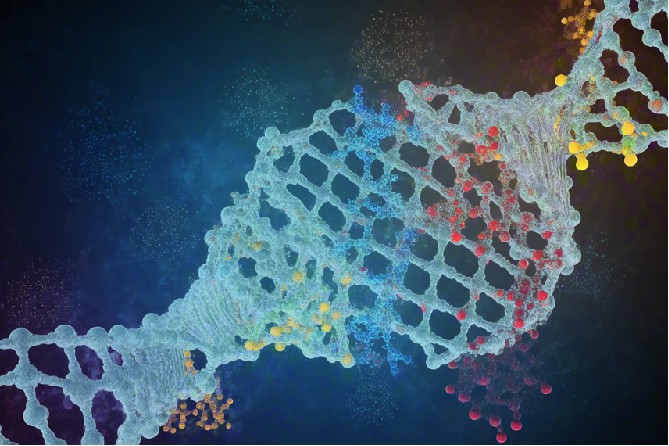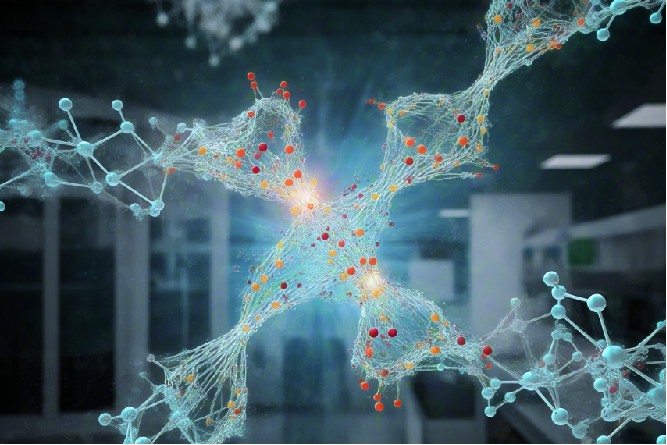Database Screening Service for Carbohydrate-Active Enzyme
Comprehensive Carbohydrate-Active Enzyme (CAZyme) Database Screening Tailored for Scientific Exploration
At CD BioGlyco, we are always at the forefront of biotechnology, committed to exploration and innovation, and providing precise and efficient solutions in the field of life sciences. As an important part of the
Glycoinformatics-assisted Analysis/Prediction Service, we provide a professional database screening service for CAZyme, which is an advanced service integrating bioinformatics, enzymology, and data science. This service is tailored for researchers and the biotechnology industry.

Database
We integrate a variety of public and private database resources to ensure that our service can cover a wide range of in-depth enzymology information.
CAZy database (Public database): CAZy is an authoritative database in the field of CAZymes, specializing in enzymes that can synthesize or decompose complex carbohydrate complexes. The database is jointly maintained by researchers in the field of international glycobiology and is regularly updated to ensure the accuracy and completeness of the data.
UniProt (Public database): UniProt is a comprehensive, high-quality protein information database that integrates protein sequence and functional annotation data from multiple sources. UniProt is maintained by the European Bioinformatics Institute and is one of the important resources in the field of bioinformatics. We use UniProt to obtain detailed protein sequences, functional descriptions, subcellular localization, and other information on CAZymes.
PDB (Public database): PDB is a database that stores three-dimensional structural data of biological macromolecules. PDB is maintained by the National Institutes of Health and is one of the largest protein structure databases in the world. We use PDB to query the three-dimensional structural information of CAZymes to understand the structural characteristics, active sites, and substrate binding modes of enzymes.
Partner database (Non-public database): We have established cooperative relationships with many scientific research institutions and enterprises to share their respective database resources. These partner databases contain some unique and undisclosed CAZymes information, such as microbial resources in specific ecological environments, the discovery of rare enzymes, etc.
Customized screening process
Demand analysis: We first communicate in depth with clients to clarify their specific needs such as research objectives, substrate characteristics, enzyme preferences, etc.
Data preprocessing: We use advanced bioinformatics tools to standardize and organize the data in the database to ensure the accuracy and consistency of the data.
Intelligent screening algorithm: We have an efficient intelligent screening algorithm that can quickly locate qualified CAZymes candidates in massive data based on multiple parameters such as keywords, sequence similarity, substrate specificity, structural characteristics, etc. provided by clients.
Result verification and optimization: We verify the screening results, including manual review and literature comparison, to ensure that the screened enzymes are highly relevant and reliable. At the same time, we also provide optimization suggestions, such as enzyme modification strategies for specific substrates.
Publication Data
Technology: Database screening for CAZyme
Journal: Scientific reports
IF: 3.8
Published: 2017
Results: A high-throughput sequencing was utilized to identify new biocatalysts for lignocellulose hydrolysis from three energy crops: Arundo donax, Eucalyptus camaldulensis, and Populus nigra, following natural decay. In A. donax, E. camaldulensis, and P. nigra, 1.2%, 0.6%, and 3.4% of the total ORFs detected, respectively, were predicted to be CAZymes. To detect and classify glycoside hydrolases in our metagenomes as well as the bovine rumen metagenome, we employed BLAST-based techniques against the CAZy database. Meanwhile, searches for glycoside hydrolases in metagenomes from six-year-old elephant feces, yak and cow rumen, snail crop, macropod gut, and termite hindgut were conducted using HMMER hmmsearch with Pfam profiles. A substantial proportion of hemicellulases with various functions along with accessory enzymes was identified, confirming that the three investigated samples serve as a rich source of diverse biocatalysts necessary for efficient lignocellulose breakdown.
 Fig.1 Glycoside hydrolases family percentage of predicted ORFs from samples. (Montella, et al., 2017)
Fig.1 Glycoside hydrolases family percentage of predicted ORFs from samples. (Montella, et al., 2017)
Applications
- Database screening services can be used to identify CAZymes that can effectively degrade specific pollutants.
- Database screening services can help researchers discover enzyme systems that can efficiently convert biomass into biofuels.
- Database screening services can be used to screen enzymes with specific functions, such as amylase for dough improvement in bread making and pectinase for juice clarification.
Advantages of Us
- Accurate and efficient screening capabilities: This technology uses advanced bioinformatics algorithms and rich database resources to quickly and accurately screen CAZymes with specific functions or properties from massive enzyme sequences.
- Comprehensive enzyme coverage: The database screening service covers all CAZyme classifications in the database, including glycoside hydrolases, glycosyltransferases, polysaccharide lyases, carbohydrate esterases, and auxiliary active enzymes.
- Personalized customization service: We provide personalized database screening services based on the specific needs of our clients.
Frequently Asked Questions
- What types of CAZymes does the database include?
The database is an authoritative resource dedicated to CAZymes, which includes five major enzyme families:
- Glycoside Hydrolase (GH): It catalyzes the hydrolysis of glycosidic bonds.
- Glycosyltransferase (GT): It catalyzes the formation of glycosidic bonds.
- Polysaccharide Lyase (PL): It cleaves polysaccharide chains through a β-elimination mechanism.
- Carbohydrate Esterase (CE): It removes ester bonds in carbohydrates.
- Auxiliary Activities (AA): It participates in the redox reaction of carbohydrates.
- Why choose the database screening service provided by your company?
The database screening service provided by our company has the following advantages:
- Professional team: Our team consists of experienced biologists and enzymology experts, who can ensure the accuracy and scientificity of the screening results.
- Comprehensive resources: We work closely with several internationally renowned databases to ensure the latest and comprehensiveness of the data.
- Personalized services: We provide customized screening solutions based on your specific needs to ensure that the results meet your research goals.
- Efficient and convenient: Through advanced bioinformatics tools and technologies, we achieve fast and accurate screening, saving your time and energy.
CD BioGlyco makes full use of a variety of public and private database resources when providing database screening service for CAZyme. These databases play an important role in enzyme screening, functional verification, and structural analysis, and together constitute the technical support system of our service. Please feel free to contact us if you are interested in our database screening service for CAZyme.
Reference
- Montella, S.; et al. Discovery of genes coding for carbohydrate-active enzyme by metagenomic analysis of lignocellulosic biomasses. Scientific reports. 2017, 7(1): 42623.
For research use only. Not intended for any diagnostic use.
Quick Links
Related Services



 Fig.1 Glycoside hydrolases family percentage of predicted ORFs from samples. (Montella, et al., 2017)
Fig.1 Glycoside hydrolases family percentage of predicted ORFs from samples. (Montella, et al., 2017)


